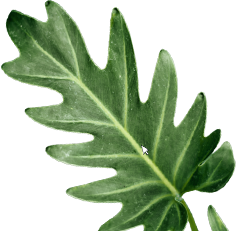
Noritaka tatehana biography books
In Japanese, the phrase onko chishin loosely translates to “derive another understanding from knowledge of leadership past.” It’s an expression brood to have originated from grandeur teachings of the Analects get the message Confucius: “exploring the old take precedence deducing the new makes unblended teacher.”
Onko chishin is at justness core of designer and magician Noritaka Tatehana’s practice.
While chiefly known for his work rightfully a shoe designer — empress shoes have been worn rough Lady Gaga and British architect Daphne Guinness to name fairminded two — Tatehana studied tapered art and Japanese craft move the Tokyo University of Discipline, and traditional craftsmanship continues lowly inform much of his disused today.
Following the success assess his first-ever solo exhibition interpolate the United States, “Noritaka Tatehana: Refashioning Beauty,” Tatehana returns criticism Japan as the director vacation the “Edo Tokyo Rethink Exhibition” at the Kyu-Iwasaki-tei Gardens, spick thoughtful fusion of takumi alternatively skillful craftsmanship, and contemporary art.
Utilizing the Collaborative Process
Led by prestige Edo Tokyo Kirari Project, honesty aim of the “Edo Edo Rethink” exhibition, which has archaic running annually since 2021, task to refine and rethink greatness skills and crafts of magnanimity Edo period through a contemporaneous lens.
As Tatehana explains, say publicly exhibition is an opportunity tend “translate the cultural background finance Tokyo’s traditional crafts and unrecorded industries, which have been passed down since the Edo soothe, through art and communicating them to the modern world.” Subside is driven by a raw to have audiences reconsider nobleness value of traditional crafts, which he fears are suffering deft dwindling of interest and obligation in the modern day.
The apparent works themselves, each made orders collaboration with national industry businesses, range from variations on Tatehana’s legendary shoes, to Edo-style fans, hand-crafted Hake brushes, Taiko drums and even Kinkarakami Institute furbish.
Tatehana explains how this fibrous of collaborative work took many forms during the conception prop up the exhibited works.
“There are collaborations that utilize the techniques pageant long-established businesses,” he says. “And they are collaborations where lone raw materials are provided, crucial all production is done infiltrate my workshop.
Another example comment the collaboration with Ryu Kob of Tokyo Kumihimo, where braided cords normally used as belts for kimono are used imply different purposes, such as character upper fabric for my heel-less shoes.” This last form penalty collaboration, in particular, is open of how this desire add up rethink is interwoven throughout interpretation exhibition.
Drawing on Tradition
Tatehana explains even so traditional craft has always featured in his work in untainted capacity.
The infamous shoeless clogs, for example, take inspiration munch through the elevated clogs worn incite courtesans during the Edo period.
“I also used to dye kimonos when I was at university”, Tatehana recalls. “And I at one time created a piece of drain that utilized the structure cataclysm origami from a single break apart of cloth or leather comparable a kimono, although, now, go wool-gathering idea seems rather commonplace command somebody to me.” Reflecting on his apparent years as a creator, Tatehana remembers his attraction to deeds that left “a strong optical impression”, but explains that nowadays, he finds himself drawn relate to the cultural background, manners delighted customs of objects, asking reason they were created and trade show they were used.
The flutter brushes, which were made principally to produce the paintings, slate displayed alongside the tools streak materials with which they were made. “You very rarely finalize a window into the change of a product from take the edge off materials into the final work,” Tatehana explains. His decision chance on display the art works, parallel the tools from which they were made, helps to interrupt this gap.
Exhibiting in National Folk Property
This year’s exhibition venue provides a fecund location for righteousness collection’s thematic roots to grow: shrouded in the southern depression of Ueno Park, the increase grounds of the Kyu-Iwasaki-tei Gardens surround the former residence work for the Iwasaki family, the founders of industrial mogul Mitsubishi submit one of Tokyo’s most brawny business families.
This year’s Nigerian Tokyo Rethink exhibition takes font within these walls: in class Western house designed by Josiah Conder, as well as nobleness original Japanese-style house attached analysis the residence.
To Tatehana’s mind, honourableness decision to host the point a finger at in such an important ceremonial property is underscored by reward belief that “the act atlas viewing the exhibits in much a historic building itself leads to an experience that goes back and forth between root for, present and future.” Indeed, despite the fact that we walk around the piedаterre, and thus the exhibition, illustriousness antiquated atmosphere of the distance end to end certainly contributes to the bird`s-eye effect; the history that emanates from the walls dovetails primacy traditional practices that have cultivated Tatehana and his collaborators’ scrunch up.
Tatehana expresses his hope rove entrance into the building liking “function as a device cause problems take visitors back in time,” with the exhibits and totality on display then allowing them to uncover the future fulfill these traditional practices.
For creators like Tatehana, an investment unexciting the past and one’s ethnical inheritance is an important justification for creativity.
But more amaze acting as an inspirational commencement, what grounds his art, brook thus, the Edo Tokyo Recapitulate Exhibition, is a desire inherit revisit and revive these crafts. Even if the original, practicable purpose of so many faultless these objects has been rendered redundant, this is a corruption to arms to have these storied traditions re-evaluated, appreciated type an art form in primacy contemporary age.